Draft EIS for the “Ottertail – Wilkin” CO2 pipeline
January 23rd, 2024
The DRAFT Environmental Impact Statement for the Ottertail-WIlkin CO2 pipeline is out and open for comment.
Yes, this is a relatively “small” project, it’s that little rectangle in the above map, but as the first CO2 pipeline going through permitting in Minnesota, it’s a precedent setter. Issues include the environmental impacts, the risks, the costs, the financing scheme, whether this collection of CO2 from ethanol plants and shipping it to ??? to use??? to store underground??? whether it will make a dent in CO2 production. From my experience with CO2 capture and storage, I think it’s a lot of hoopla for a projects that costs billions and which will make the project owners very wealthy and not do much, if anything, for us. However, that being said, I need to check out the details. You can too — right here:
Utility scale solar siting guidance
March 14th, 2023
Big solar projects, utility scale projects taking up 2,500-3,500 acres of prime farmland, are an issue here in the midwest. There are legitimate problems, primarily runoff and erosion necessitating drainage mitigation and large ponds; and the problem of fencing around the project funneling wildlife onto the roads and highways.
Anyway, there’s been some attention paid to these issues, in one case by none other than my “friends” at Great Plains Institute, who were part of a federal study on stormwater management:
That’s good, an admission that there are problems with water draining off all these acres of impervious surface.
And this just came through today from the Environmental Quality Board:
The guidance has a link to a way to find “high value” resources:
Most high value resources described in this guidance document can be identified using Minnesota
Conservation Explorer (MCE).
Another CCS scam bites the dust
October 10th, 2022
Here’s a real DOH! which could have been avoided, but DOE through several administrations keep throwing good money after bad for carbon capture and storage pipedream:
The ill-fated Petra Nova CCS project: NRG Energy throws in the towel
NRG’s Petra Nova project $$$:
Short version? FAIL! From the article:
Following this FAIL, the understatement of the century, from the article:
Yet CCS is a big part of the latest federal energy efforts. It’s also a huge boondoggle for not just outfits like NRC, but for certain “non-profits” like Great Plains Institute:
And check out these salaries:
Great Plains Institute helped push coal gasification, for extreme amounts of money…
Great Plains Institute – is Joyce getting their $$ worth?
January 18th, 2007
… but that pales in comparison for the dollars for this recent round of “carbon capture” promotional funding. Unreal…
Once more with feeling — carbon capture is not real, is not workable, is a waste of $$ and effort.
Carbon capture & storage again?!?! JUST NO!
October 28th, 2020
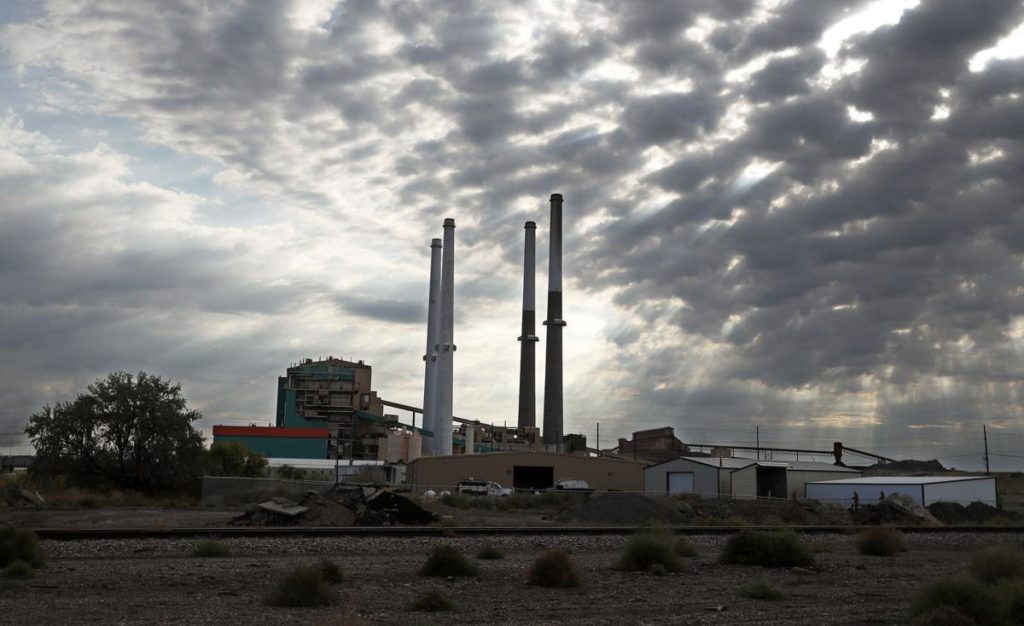
Here’s a study from 2018 that I found in connection with a recent article about the controversy over the Colstrip coal plant and whether it will be rehabbed, whether it will continue to provide Idaho with some power after withdrawal from Washington state.
Idaho regulators have Colstrip concerns
Here’s the study:
Carbon Capture was to be considered in the plan for Colstrip rehab, but here’s the conclusion:
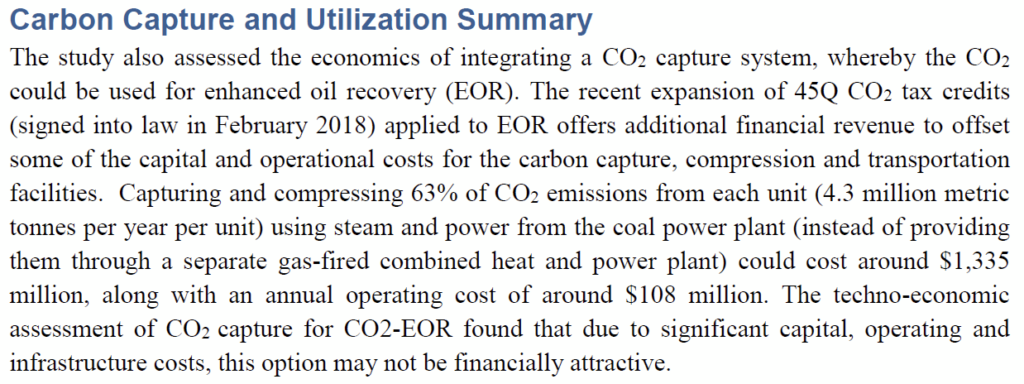
45Q CO2 tax credits? Get out the waders. From our “good friends” at Great Plains Institute, its Primer: Section 45Q Tax Credit for Carbon Capture Projects.

To implement the reformed 45Q, the US Treasury requested public comments in IRS Notice 2019-32 on several key issues. The IRS issued guidance on beginning and continuous construction requirements along with a revenue procedure for business partnerships that include investors claiming the tax credit. The IRS released proposed regulations to address additional implementation issues, including requirements for demonstrating secure geological storage, credit recapture, credit transferability and contractural assurance, and requirements for lifecycle analysis of emissions reductions for projects that beneficially use CO2 or CO to convert manufacture fuels, chemicals, or other useful products like cement.
https://www.betterenergy.org/blog/primer-section-45q-tax-credit-for-carbon-capture-projects/
Yes, Great Plains Institute has a big money-suck program AGAIN, pushing “carbon capture and storage/sequestration.”
Money suck? Yes, look at this from 2017 IRS 990, most recent I could find, but for sure there is more since:

Current Legalectric post, and going back… been there, done that, must we?
More Carbon Capture PR BS
February 21st, 2020
CO2 pipelines? It’s a red herring!
March 22nd, 2017
Do really need to go through this again? Apparently, because as Bill Grant, formerly Deputy Director of Commerce on the Energy side, and before that Izaak Walton League forever, said circa 2005 and coal gasification and CCS, “we need to find a way forward for coal.” We’ve been there, done that, and carbon capture is a pipedream:
And even though we knew it then, the science and economics were in the record, regulators and applications paid little attention until plant after plant was blocked, denied, and withdrawn. Then again, they got a LOT of money to promote coal gasification and carbon capture, but those of us without funding, without resources, kept at it, and prevailed.
IEDC gets carried away
February 15th, 2007
And here are the presentations from that fiasco, the shameful promotion of CCS contrary to science and economics:
Presentations at IEDC
February 16th, 2007
CO2 sequestration is so… like… not happening!
January 26th, 2007
Great Plains Institute – is Joyce getting their $$ worth?
January 18th, 2007

EQB hosts EPA rule listening session
June 17th, 2014
Where to start… in addition to just one day’s notice, look at the presenters, skewed towards “Coal on the Wires” where they can explain how it’s all about wind, an important concept as we consider what these EPA regulations mean. From this vantage point, it’s my understanding that with the new regulations, it might have an impact of maybe 7% decrease in use of coal for electrical generation. Bears more review.
Here are the EPA regs they’ll be talking about, and it’s open for Comment until some time n September:
Proposed power plant regulations
Clean Power Plan Proposed Rule – June 2, 2014
Proposed Carbon Pollution Standards for Modified and Reconstructed Power Plants – June 2, 2014
TOMORROW, at the EQB (click for larger version):
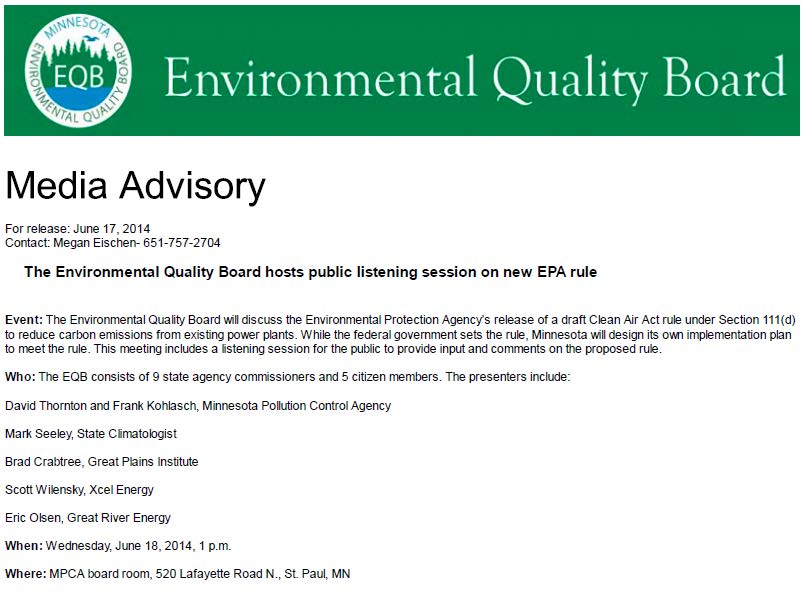 From the looks of it, it sure looks like more of a “talking session” to me. And note those last three!
From the looks of it, it sure looks like more of a “talking session” to me. And note those last three!
Brad Crabtree, Great Plains Institute
Scott Wilensky, Xcel Energy
Eric Olsen, Great River Energy
All promoters of transmission, “Coal on the Wires,” otherwise known as CapX 2020 plus. Here’s CapX 2020, look at those North Dakota references:
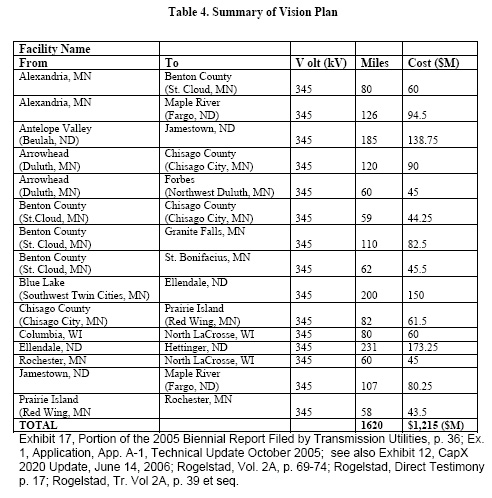 And the map, again, look where it starts:
And the map, again, look where it starts:
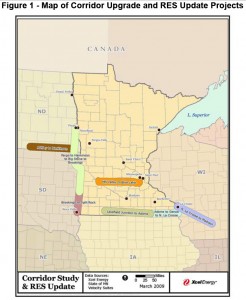 And the MISO Multi-Value Project list of 17 transmission projects:
And the MISO Multi-Value Project list of 17 transmission projects:
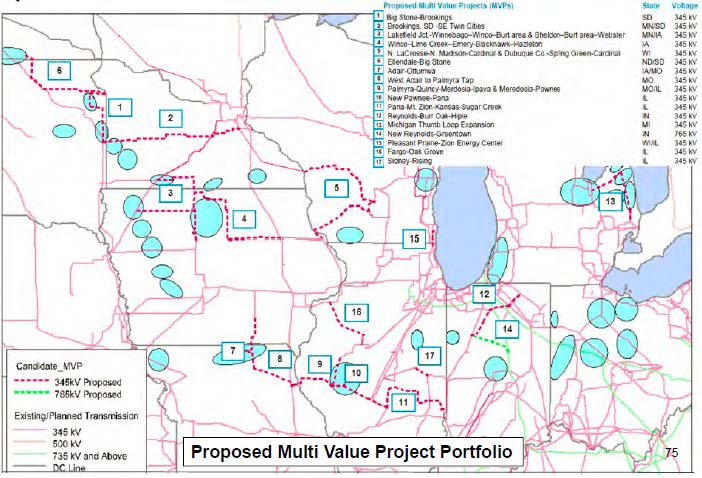 And folks, with all that transmission, here in the Midwest, we’re most of the way to JSCP:
And folks, with all that transmission, here in the Midwest, we’re most of the way to JSCP:
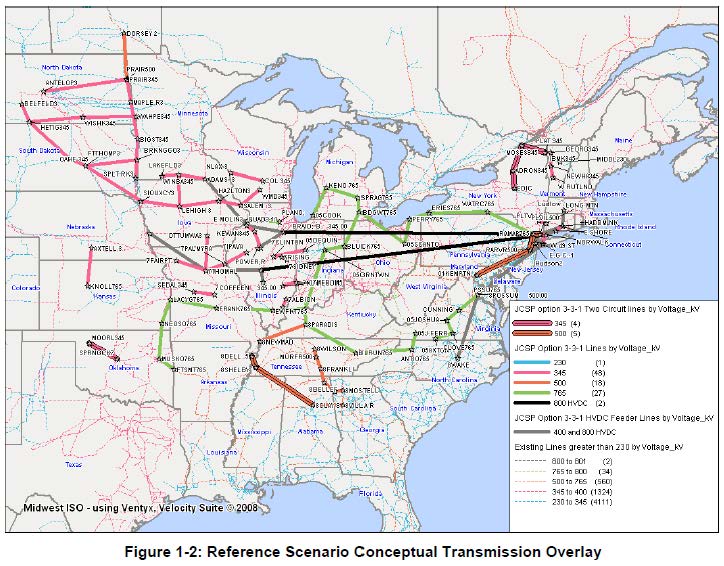 As Xcel’s Tim Carlsgaard argued the other day, there are no plans for new coal… Well, when CapX 2020 was at the PUC for the Certificate of Need, MISO’s Jeff Webb testified that there was 3,441 of new coal in ND, SD, IA and MN in the MISO queue (and over 7,000 MW of wind in the Illinois queue). And we know that transmission for coal pays, and oh, how it pays:
As Xcel’s Tim Carlsgaard argued the other day, there are no plans for new coal… Well, when CapX 2020 was at the PUC for the Certificate of Need, MISO’s Jeff Webb testified that there was 3,441 of new coal in ND, SD, IA and MN in the MISO queue (and over 7,000 MW of wind in the Illinois queue). And we know that transmission for coal pays, and oh, how it pays:
But that’s different now… OH? How so? Because it’s not different. It’s “Coal on the Wires.”
First, there’s no talk of closing the coal plants in the area where CapX 2020 transmission starts. Minnesota Power did buy a transmission line and will convert it to wind, but what will happen to the coal on that line:
Oh, right, CapX 2020 will be up and running by then. And after all, additional transmission for coal has been in the works for a long, long time, well over the 15 years that I know of:
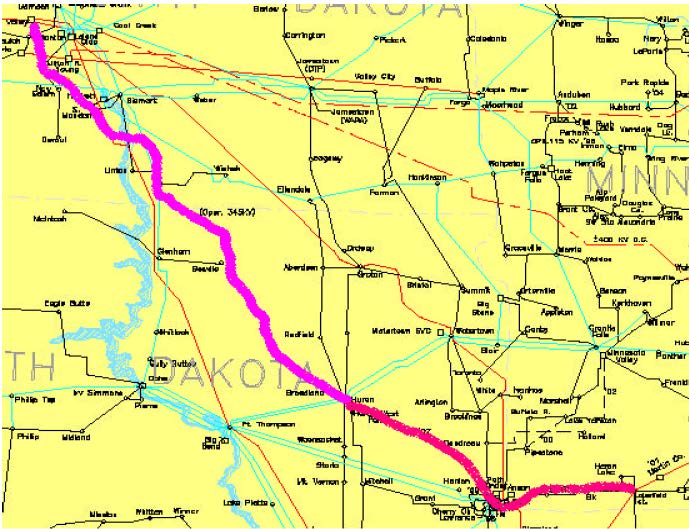
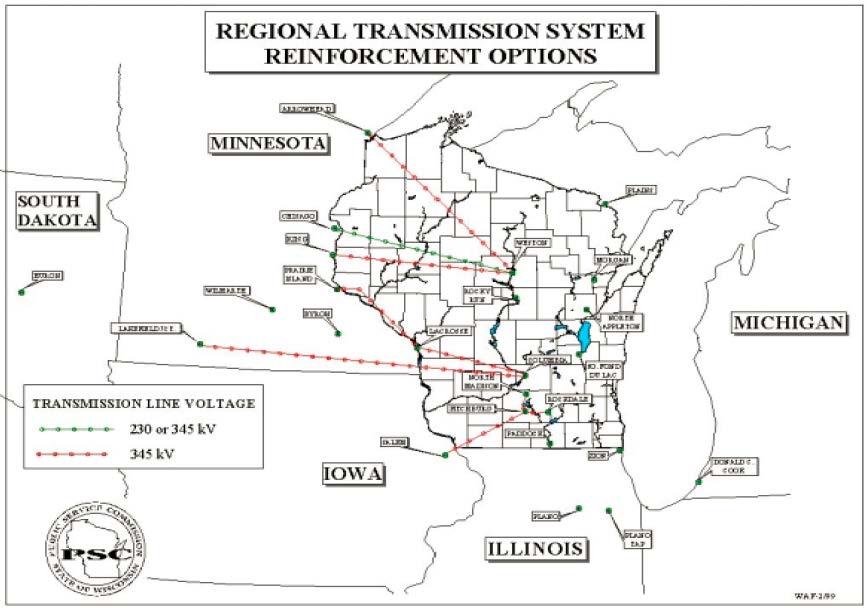 You can see how the “new” CapX 2020, JCSP, and MISO MVP plans have built on the foundation of Lignite Vision 21 and WRAO/WIREs. Yea, but that’s still old news. Sure, but there’s a lot to be said about learning from history. And then there’s this matter of trajectory, we can see where this is going.
You can see how the “new” CapX 2020, JCSP, and MISO MVP plans have built on the foundation of Lignite Vision 21 and WRAO/WIREs. Yea, but that’s still old news. Sure, but there’s a lot to be said about learning from history. And then there’s this matter of trajectory, we can see where this is going.
As I noted on No CapX2020 not long ago, here’s what’s up with coal right now:
- Not one North Dakota coal plant has been shut down.
- Minnesota Power has purchased the “coal line” coming from North Dakota into Northern Minnesota, and once CapX 2020 is up and running at the western end, they’ll put that coal generation on CapX.
- Read the federal judge’s decision on the Next Generation Energy Act, declaring it unconstitutional. First, the decision notes that the Dry Fork coal plant has been moved from the West into the Eastern Interconnect (it’s “new coal” now on transmission heading our way that wasn’t coming here before).
- Also in that decision, it discusses plans for a new coal fired plant in South Dakota.
- And also the potential for an additional unit at Dry Fork, which is now in Eastern Interconnect (coming our way).
- AND it discusses the surplus at Milton Young, which would be exacerbated by transmission prohibitions of the Next Generation Energy Act.
What else is planned? Let’s all start looking, particularly since the federal judge’s decision on the Next Generation Energy Act.
Don’t forget that there is not one single Renewable Energy Standard/Mandate that requires any coal be shut down. It only requires addition of “renewable” generation. Think about that. If we shut down the coal, for instance the North Dakota coal where CapX starts, there would be plenty of transmission capacity for wind and the back up gas or hydro to firm it up. DOH! So if the enviros and those supporting RES across the country are serious about stopping coal, why aren’t they including requirements to shut down coal, and why are they promoting transmission? It doesn’t reduce emissions, doesn’t reduce CO2 or anything else, it just adds wind generation on top of an admitted surplus. Why support and promote transmission, and not require shut down of coal? Well, they are getting paid to support and promote transmission.
And speaking of Great Plains Institute…. GPI has long been trying, as Bill Grant did, to “find a way forward for coal” (Walton’s Bill Grant and “low carbon coal”). Remember Great Plains and all they did for money on coal gasification? Here’s just a bit of it:
Great Plains Institute for Sustainable Development
To support the efforts of its Coal Gasification Working Group.
Minneapolis, MN $437,500
21 mos. 2006Great Plains Institute for Sustainable Development Inc.
To brief Midwest lawmakers and regulators about how advanced coal technologies are currently deployed in Europe and encourage their support for similar adoption here.
Minneapolis, MN $99,400
1 yr. 2007
Here’s more:
IGCC toadies in Pierre, SD
And speaking of the EPA, here’s a settlement where they caved in exclusion of coal gasification as BACT (DOH, how could it be when it’s not happening? The EPA was right, and the IGCC toadies pushed for inclusion of coal gasification and got this settlement, and how much money was attached to that? Furthering the IGCC: Pipedreams of Clean and Green is not in anyone’s interest.):
We must remember history and hopefully not repeat it. There’s the established history of transmission planning for coal, and there’s the established history of “environmental” NGOs supporting coal gasification and transmission for money. As they discuss these new EPA regulations and the potential impact, remember that they put their mouth where their money is.
Meanwhile, about those Comments to the EPA? Again, here’s what’s at issue:
Proposed power plant regulations
Clean Power Plan Proposed Rule – June 2, 2014
Proposed Carbon Pollution Standards for Modified and Reconstructed Power Plants – June 2, 2014
And read Charlie Komanoff’s views:
How to file Comments? From the fed website, the pre-publication version I have doesn’t state the deadline, but it’s September sometime:
Submit your comments, identified by DocketID No. EPA-HQ-OAR-2013-0602, by one of the following methods:
- Federal eRulemaking portal: http://www.regulations.gov
- Email: A-and-R-Docket@epa.gov. Include docket ID No. EPA-HQ-OAR-2013-0602 in the subject line of the message.
- Facsimile: (202) 566-9744. Include docket ID No. EPA-HQ-OAR-2013-0602 on the cover page.
- Mail: Environmental Protection Agency, EPA Docket Center (EPA/DC), Mail code 28221T, Attn: Docket ID No. EPA-HQ-OAR-2013-0602, 1200 Pennsylvania Ave., NW, Washington, DC 20460. In addition, please mail a copy of your comments on the information collection provisions to the Office of Information and Regulatory Affairs, OMB, Attn: Desk Officer for the EPA, 725 17th St. NW, Washington, DC 20503.









